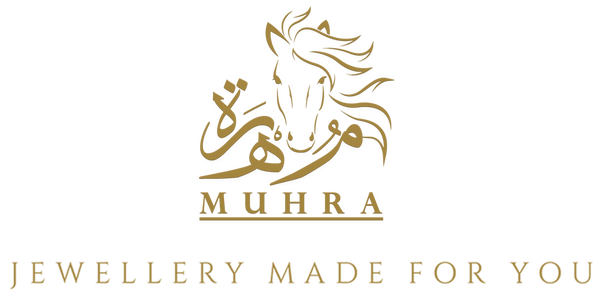
A Guide to Weight Units: Understanding Differences and Uses
Share
Weight units are essential for a wide range of industries, from culinary arts to jewelry making, construction, and science. Knowing the differences between weight units and understanding where each is commonly used can enhance accuracy and effectiveness in various tasks. Here’s an in-depth look at weight units, their differences, and their applications.
- Metric System Units
The metric system is the most widely used weight measurement system worldwide, known for its simplicity and logical base-10 structure.
- Gram (g): The gram is a base unit for small measurements, often used for food ingredients, precious metals, and pharmaceuticals.
- Kilogram (kg): One kilogram equals 1,000 grams and is commonly used for larger items, including produce, meat, and luggage.
- Metric Ton (t): Also called a tonne, this unit is equivalent to 1,000 kilograms or 1 million grams. It’s often used in industries where large weights are common, such as shipping, mining, and construction.
The metric system is popular in Europe, Asia, and other parts of the world because of its logical structure and ease of converting between units.
- Imperial System Units
The imperial system of weights is primarily used in the United States, although the UK and Canada sometimes still use it alongside the metric system.
- Ounce (oz): Common in cooking, particularly for smaller quantities of ingredients, and in measuring precious metals (like gold and silver) in troy ounces.The troy ounce is heavier than Ounce.
- Pound (lb): The pound, which equals 16 ounces, is widely used for weighing foods, packages, and people.
- Ton: In the imperial system, a ton is 2,000 pounds, often called a "short ton." The "long ton," used mainly in the UK, equals 2,240 pounds. Both are frequently used for large, industrial-scale weights.
This system's complexity, with no easy conversion between units, has led to its gradual phasing out in most parts of the world.
- Specialized Units in Jewelry
In the jewelry industry, precise measurements are critical for pricing and crafting.
- Carat (ct): Used to measure gemstones, one carat is equal to 200 milligrams. It's typically divided into 100 "points" to allow for even more accurate pricing based on gem weight.
- Grain: Mostly used for pearls, gemstones, and gunpowder, with one grain equaling about 64.8 milligrams.
- Troy Ounce: Primarily used for precious metals, including gold, silver, and platinum. One troy ounce equals 31.1035 grams, slightly heavier than the standard ounce. This unit helps standardize the pricing of precious metals globally.
- Units in Scientific and Pharmaceutical Use
Precise measurements are essential in the scientific and pharmaceutical fields, where even small variances can affect outcomes significantly.
- Milligram (mg): Used for measuring ingredients or compounds in medications, one milligram equals one-thousandth of a gram. This unit is critical in pharmaceuticals, where dosages often require high precision.
- Microgram (µg): This unit, a thousandth of a milligram, is vital in both pharmaceuticals and scientific research for measuring tiny amounts of substances.
- Atomic Mass Unit (AMU): Used mainly in physics and chemistry, AMUs measure atomic and molecular masses, providing a standardized unit for subatomic particles.
- Agricultural and Industrial Units
Large-scale industries, such as agriculture and manufacturing, need to measure bulk materials efficiently. For these sectors, weight units that are easy to scale up are essential.
- Stone: Primarily used in the UK for measuring human body weight, a stone equals 14 pounds. It’s less common in scientific or industrial settings.
- Hundredweight (CWT): In the US, a hundredweight equals 100 pounds, while in the UK, it equals 112 pounds. Commonly used in agriculture, for instance, in measuring grains or livestock.
- Bushel: A volume-based unit often used in agriculture, particularly for dry commodities like grains. It has a weight equivalent based on the commodity, like corn or wheat, making it a unit of both weight and volume.
6. Tola: A Traditional Weight Unit in South Asia and the Middle East
The tola is a traditional weight unit predominantly used in South Asia and the Middle East, especially in the jewelry and precious metals industries. Originating from ancient India, the tola has been widely adopted due to its practical application in measuring small yet valuable items.
- Tola (tol or tolah): One tola is approximately equal to 11.66 grams. This unit is still widely used in countries like India, Pakistan, Nepal, and several Middle Eastern nations. Jewelers commonly use it to measure gold, silver, and other precious metals, and in some markets, tola-weight jewelry is a significant purchasing factor.
The tola's value lies in its ability to standardize measurements for precious metals, making it easy to calculate prices based on weight without converting to other units. For example, a piece of jewelry weighing two tolas would weigh around 23.32 grams, allowing sellers and buyers to understand the weight and value of the item within familiar terms.
Example: In gold trading, especially in South Asia, prices are often quoted per tola. This tradition makes it easier for consumers and merchants alike to negotiate and agree upon pricing based on a familiar unit.
Including the tola adds a unique dimension to the blog, as it highlights how historical and cultural weight units remain relevant in specific regions and industries today.
Choosing the Right Weight Unit
In daily life, most people encounter metric and imperial units, with specialized units mainly in certain industries. For precise tasks—like gem measurement in jewelry or exact dosages in pharmaceuticals—understanding the differences between units becomes essential. Whether you’re a chef, jeweler, scientist, or simply interested in the systems we use, knowing the appropriate unit can make all the difference in accuracy and reliability.
